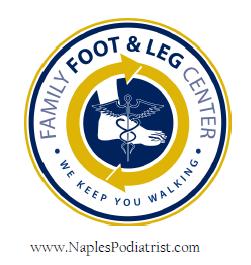Some of our patients are undergoing chemotherapy to treat various cancers, and this may cause some patients to experience painful scaling skin on the palms and soles of their feet and hands. Here is some general information to guide you towards improving this condition. Please come and see me if any problems or concerns arrise.
- Dr Timm
Hand-Foot SyndromeOther terms: Palmar-Plantar Erythrodysesthesia; PPE
What is hand-foot syndrome?Also called hand-foot syndrome or hand-to-foot syndrome, Palmar-Plantar Erythrodysesthesia is a side effect, which can occur with several types of chemotherapy or biologic therapy drugs used to treat cancer. For example, Capecitabine (Xeloda
®), 5-Flurouracil (5FU), continuous-infusion doxorubicin, doxorubicin liposomal (Doxil®), and high-dose Interleukin-2 can cause this skin reaction for some patients. Following administration of chemotherapy, small amounts of drug leak out of very small blood vessels called capillaries in the palms of the hands and soles of the feet. Exposure of your hands and feet to heat as well as friction on your palms and soles increases the amount of drug in the capillaries and increases the amount of drug leakage. This leakage of drug results in redness, tenderness, and possibly peeling of the palms and soles. The redness, also known as palmar-plantar erythema, looks like sunburn. The areas affected can become dry and peel, with numbness or tingling developing. Hand-foot syndrome can be uncomfortable and can interfere with your ability to carry out normal activities.
Things you can do if you suspect hand-foot syndrome (Palmar-Plantar Erythrodysesthesia):
Prevention: Prevention is very important in trying to reduce the development of hand-foot syndrome. Actions taken to prevent hand-foot syndrome will help reduce the severity of symptoms should they develop.This involves modifying some of your normal daily activities to
reduce friction and heat exposure to your hands and feet for a period of time following treatment (approximately one week after IV medication, much as possible during the time you are taking oral (by mouth) medication such as capcitabine). Avoid long exposure of hands and feet to hot water such as washing dishes, long showers, or tub baths. Short showers in tepid water will reduce exposure of the soles of your feet to the drug. Dishwashing gloves should not be worn, as the rubber will hold heat against your palms. Avoid increased pressure on the soles of the feet or palms of hands. No jogging, aerobics, power walking, jumping - avoid long days of walking. You should also avoid using garden tools, household tools such as screwdrivers, and other tasks where you are squeezing your hand on a hard surface. Using knives to chop food may also cause excessive pressure and friction on your palms.
Cooling procedures:
Cold may provide temporary relief for pain and tenderness caused by hand-foot syndrome.
Placing the palms or bottoms of your feet on an ice pack or a bag of frozen peas may be very comforting. Alternate on and off for 15-20 minutes at a time.
Lotions:
Rubbing lotion on your palms and soles should be avoided during the same period, although keeping these areas moist is very important between treatments.
Emollients such as AMLACTIN, Aluvea,Aveeno
®, Lubriderm
®, Udder Cream
®, and Bag Balm
® provide excellent moisturizing to your hands and feet.
Pain relief:
Over the counter pain relievers such as acetaminophen (Tylenol
®) may be helpful to relieve discomfort associated with hand-foot syndrome. Check with your doctor.
Vitamins:
Taking Vitamin B6 (pyridoxine) may be beneficial to preventing and treating Plantar-Palmar Erythrodysesthesia, and should be discussed with your doctor.
Drugs/treatment changes that may be prescribed by your doctor:
Chemotherapy treatments may need to be interrupted or the dose adjusted to prevent worsening of hand-foot syndrome.
When to call your doctor or health care professional:
If you notice that your palms or soles become red or tender. This most often occurs before any peeling, and recommendations for relief of discomfort can be given. If you are on chemotherapy pills, you may be asked to hold treatment, or need your dose adjusted to prevent worsening of symptoms.
 The main reason why surgery is likely required in these individuals with the fractured fifth metatarsal, stems from the nature of the amount of weight applied to the area with each step, as well as where the tendons insert at the most proximal aspect of the main fracture fragment, with each step the tendon pulls away this fracture from the main portion of the bone. Sometimes a below knee cast is applied to stop all motion, but even this may not fully accelerate healing. The screw fixation eliminates all motion to the site, and by placing the screw, the surgeon is able to drill through the scar tissue and promote healing with placement of demineralized bone matrix proteins and collagen to enhance liklihood of healing the fracture.
The main reason why surgery is likely required in these individuals with the fractured fifth metatarsal, stems from the nature of the amount of weight applied to the area with each step, as well as where the tendons insert at the most proximal aspect of the main fracture fragment, with each step the tendon pulls away this fracture from the main portion of the bone. Sometimes a below knee cast is applied to stop all motion, but even this may not fully accelerate healing. The screw fixation eliminates all motion to the site, and by placing the screw, the surgeon is able to drill through the scar tissue and promote healing with placement of demineralized bone matrix proteins and collagen to enhance liklihood of healing the fracture. 




